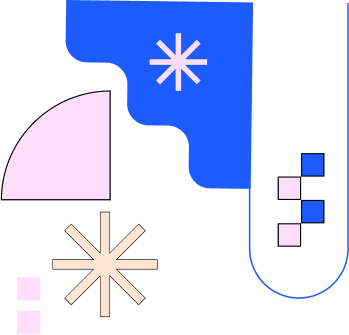
How to build and train AI agents: A complete guide

If you stay current about AI innovations, you know why it makes sense to build AI agents for your custom enterprise needs. The rise of autonomous artificial intelligence agents underscores the growing demand for AI agents for enterprise workflows or complex jobs because AI agents or bots provide information to users and help businesses execute tasks end-to-end. There is no denying that independent decision-making through sub-processes makes AI agents a favorite companion among business leaders.
Knowing that AI agents are the next big frontier in AI innovations, AI leaders aim to adopt agentic AI-based goal-driven software applications. The demand is such that Gartner predicts that 33% of software applications will include agentic AI or agency by 2028, up from less than 1% in 2024.
Based on the study, the assumption is that 15% of day-to-day work-related decisions will be made autonomously. This is a significant shift in how we manage enterprise workflows, removing manual interventions substantially.
So, if you ask, " How can I build my AI agent?” We have you covered. Our guide to building AI agents covers all the steps and best practices, including the easy way to drive the initiative successfully.
What is an AI agent?
AI agents are advanced computer programs that simulate natural language between a machine and a human to help people find answers to their questions and perform tasks end-to-end until the goal is achieved.
Unlike traditional AI systems that work only once when prompted, AI agents exhibit human-like agency to make decisions through sub-processes of complex tasks and execute them no matter how the scenario changes.
For example, if an AI agent handles an email campaign for marketing operations, it can follow end-to-end. In the funnel, if any email receives a business query, it eventually learns to answer all questions and, if need be, can schedule a meeting with the sales.
There are many types of AI agents, including assistive and autonomous agents. Assistive agents follow predefined rules to provide answers and help employees with specific tasks. Autonomous agents can work without human intervention to understand and respond to employee queries. An AI agent builder can help you create the custom AI agents of your choice.
Training is key to building powerful and valuable artificial intelligence agents for complex, multi-step tasks. Let's explore the several steps involved in training and creating an AI agent.
What are the fundamentals of building and training AI agents?
At the core, data is essential to building and training an AI agent, which involves teaching AI agents to understand and respond to human language while being trained to remain relevant and meaningful to user queries. Data stays at the heart of training no matter what AI models you choose. Here’s how data works for a variety of AI concepts.
AI systems with machine learning can adapt and learn without being programmed. When trained, this type of AI uses algorithms to ingest historical data, identify patterns, and eventually learn to make decisions and respond. The more data ML in AI agents ingests, the better it gets in responding.
When interactions occur between a computer and a human, NLP, a significant part of AI technology, helps decipher human language and improve understanding, intent, and context. For AI agents, NLP ensures that human language is expressed meaningfully.
Imagine finding a sack in a room full of identical sacks. It is undoubtedly a tough job if you are to find a sack without a label on it. Data labeling or tagging is essential to AI training, where AI trainers annotate data—metadata or tags for raw data to help AI agents or systems identify the correct information stack.
Data labels categorize raw data into topics, tag parts of speech in a sentence, and determine the sentiment of a query. Various meaningful labels help AI agents to understand and respond to user queries in a meaningful way.
What are the essential steps for building an AI agent?
AI agent development can be tricky if you are new to this domain. Yet, we have a simple step-by-step guide to helping you build AI agents from scratch. Let’s navigate seven essential steps and bring process efficiency to your initiative.
Define the purpose of your AI agent
The first step to AI agent implementation involves determining the scope and purpose of your project. Simply put, it means, why do you need an AI agent, and what tasks or functions do you want your AI agents to perform or handle to solve a problem? Having a transparent approach will remove hurdles as you move through the steps.
First, list your questions.
Once you decide on your purpose, you will be clear about the features, integrations, workflows, and other goals you want to achieve.
Key considerations when defining purpose:
Decide what internal data you might need to train your AI agents to execute generative AI tasks. For example, if you plan to handle employee onboarding processes, gather employee onboarding historical data from databases and process it.
Always start small. It is better to avoid all flows at once lest you make costly mistakes. One task at a time is always a preferred choice.
Ensure that AI agent deployment supports your business goals, such as improving employee or customer experiences and reducing costs.
Before you finalize your objectives, collaborate with various stakeholders, such as developers, CFOs, marketing teams, service desk teams, etc, to validate the project's purpose.
The purpose is essential to building an AI agent. If you want to create an AI agent for employee support, your purpose should include,
AI agents can bring value to your initiatives as you and your team validate this purpose.
Collect and prepare training data
The AI agent development relies upon various sources of internal data. However, your data must be accurate for AI agents to work accurately and efficiently. High-quality data can process massive inputs and provide correct answers. So, the AI agent builder or platform you choose must support, understand, and process various data sources, such as,
Once your data is ready to be used, it must be prepared. There are several processes for data processing. They include,
Keeping data up-to-date data for your AI agent: an example
For employee support for IT and HR across businesses, Workativ provides a Knowledge AI GPT platform to help keep your data current and accurate. It provides an easy way to edit and update your data and ensures you always provide correct data for your AI agents to work efficiently.
By choosing a platform that supports easy data integration and edits, you can ensure success for AI agent implementation.
Choose the right machine-learning platform
Building scalable AI agents relies on selecting the right machine-learning models as they process massive data sets, learn from data, and perform their tasks. There are two types of machine learning models: neural networks ML and reinforcement ML models.
Train the AI agent
Once your data is ready, it is time to train your AI agents. This time, your AI agent models will begin to learn from the examples you have prepared. Here are some key steps to train your AI agents:
Design and build the conversational workflows
Once you learn that your AI agents have undergone a perfect training process and perform accurately, it is time to define how they should interact with users. Building and training custom AI agents must adhere to a business's personalized needs. So, they must respond beyond FAQs and react as the scenario demands. So, be ready for scenarios your AI agent can encounter and handle queries.
Allow your AI agents to fetch information from knowledge bases and respond to users directly.
Integrate with business systems through APIs or connectors so that your AI agents can fetch data from third-party systems and answer user queries.
Set a fallback scenario so that AI agents can quickly transfer a call to a human agent if they do not have enough answers.
Test and validate AI agents
Once you have built your AI agent, you must test and validate if it performs as expected. AI agents must be flexible with FAQs, including custom or unique questions. Document all the scenarios stated in the above section and test them. Other than this, check if your AI agent can handle user errors. If your AI agents can simulate all scenarios, it is confirmed that your AI agent bot can handle conversational workflows and provide correct answers.
Testing and validation also include preventing hallucinations. To optimize AI agents’ performance, you must do the following:
Correct or tweak system prompts to ensure that AI agents can achieve accuracy for human language.
Ensure that your AI agents only fetch data from verified sources instead of making responses independently.
Deploy and monitor the AI agent
Once everything is ready, you can deploy your AI agent in a live environment and monitor user interaction.
There are various platforms, such as your company website, business applications, and chatbot, to deploy your bot. For example, if you want to deploy it into your chatbot system. With Workativ, you can deploy your AI agent into MS Teams, Slack, or a website widget.
After you deploy the AI agent, monitor its performance to ensure it meets your user expectations. The best way to monitor and implement updates to the AI agent is to ask for user feedback. By collecting and implementing feedback, you can ensure that AI agents can adapt over time, improve, and meet user expectations.
What's the best way to build an AI agent?
There’s a better and easier way to build and train an AI agent. Get a no-code AI agent studio or AI agent builder from Workativ. There is no pain in hiring a data scientist team and getting headaches for allocating a huge budget. Workativ’s AI agent studio eliminates all the hassles of custom development processes for AI agents. It is just as easy as learning ABC.
As you experience, Workativ makes it easy to build and train your AI agent and optimize support operations for your service desks. If you want to increase productivity and efficiency in your business, AI agents are the future. So, are you ready to take the next step with Agent AI Studio? Schedule a demo today.
FAQs
What is an AI agent?
AI agents are computer-programmed systems that can exhibit human-like agency, work independently without human intervention, and complete a task end-to-end.
Why do business leaders leverage AI agents?
Salesforce says 83% of business leaders need AI agents to improve business processes. AI agents can drive massive process efficiency by eliminating manual and repetitive tasks while improving customer experience.
Why is data critical for AI agent training?
High-quality data helps AI agents learn from data to understand human language, identify patterns, and make decisions. These abilities help AI agents to maintain accuracy and relevance. So, data is critical for AI agent training.
What are some machine learning models used to build and train AI agents?
There are neural network-based machine learning models and reinforcement learning models. You can also try out pre-trained GPT models to build and train AI agents.
What is the fastest way to build and train AI agents?
A no-code AI agent builder like Workativ provides the fastest way to build AI agents without writing extensive codes. These no-code agent builders are easy to use and fast to deploy your AI agent.
In this Blog


About the Author

Deepa Majumder
Deepa Majumder is a writer who nails the art of crafting bespoke thought leadership articles to help business leaders tap into rich insights in their journey of organization-wide digital transformation. Over the years, she has dedicatedly engaged herself in the process of continuous learning and development across business continuity management and organizational resilience.
Her pieces intricately highlight the best ways to transform employee and customer experience. When not writing, she spends time on leisure activities.

